Top 10 DDoS Protection Tools in 2025
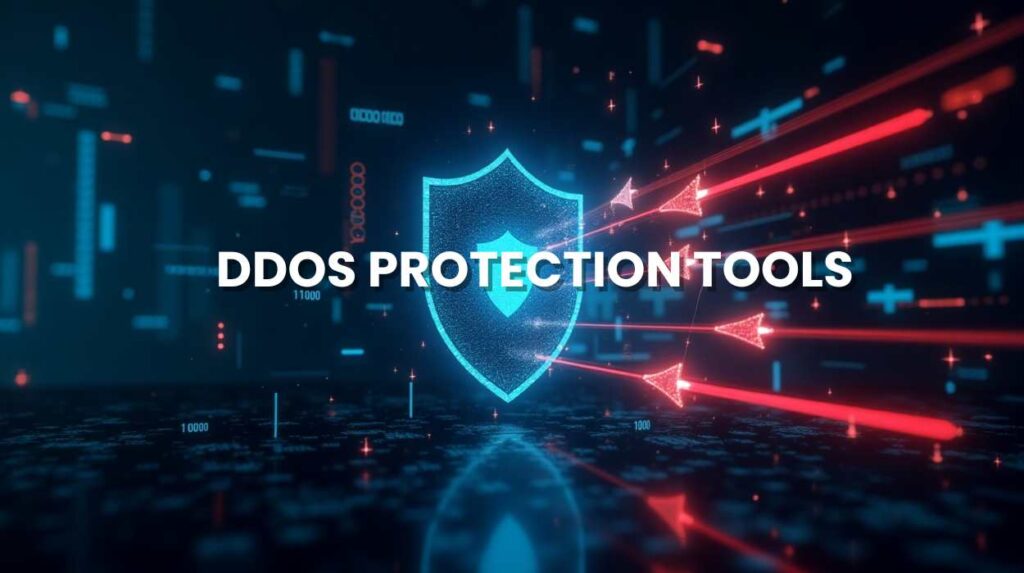
In this evolving digital landscape of 2025, businesses and organisations are facing a number of cyber threats, and Distributed Denial of Service (DDoS) attacks of them all is the most harmful. This is why all businesses need DDoS protection tools to protect their data and business. These tools help in detecting, mitigating, and preventing DDoS attacks that can ruin your website with unnecessary traffic.
In this blog, we will walk you through the top 10 DDoS protection tools in 2025. Additionally, we will also provide all the necessary details about them and a comparison table to help you select the right tool.
What is a DDoS attack?
A Distributed Denial of Service (DDoS) attack is an abusive effort to interrupt the regular behaviour of a targeted server, service, or network by saturating it using masses of web traffic. As opposed to a conventional denial of service (DoS) attack, which is usually perpetrated by a single rapid source, a DDoS attack emanates from several systems that have been hacked, frequently distributed in various geographical locations all over the world, which is why it the name a distributed attack.
They are corrupted machines that make it possible for the attacker to remotely take control of them and eventually bombard the target with an excessive quantity of requests or data packets. The goal? In order to fill the bandwidth, CPU or memory of the target, resulting in slowdowns, crashes and inability of genuine users to access the target.
DDoS Attacks may take a few minutes to days, causing a ruined reputation, loss of revenue and in worst-case scenarios, legal liability as well. In 2025, the attackers are more skilled as they attack using automated scripts and AI-based ways to identify vulnerabilities. Consequently, organisations will have to use equally smart DDoS protection measures capable of traffic monitoring, detecting abnormalities, and responding swiftly to ensure real-time detection.
Why is DDoS protection essential in 2025?
DDoS protection tools are important in 2025 because:
Increased Frequency and Volume of Attacks
DDoS attacks have also increased in size and frequency with the introduction of modern attacks. The offenders have gone to the extent of creating flows of traffic at terabits per second (Tbps), which have reduced the strongest networks to their knees in a matter of seconds.
Targeted Attacks on Critical Infrastructure
Other targets that are high up in the list include governments, healthcare providers, banks, cloud service providers, and attackers seeking political or financial gains. These critical services suffer serious impairment in operations without the protection tools against the DDoS attack.
Sophisticated Multi-Vector Threats
Complex floods of traffic are a thing of the past. The modern DDoS attacks are multi-vector, using a mix of volumetric, protocol and application-level attacks to circumvent trivial protection.
Financial and Reputational Damage
Each minute of businesses being downed by a DDoS attack can result in thousands of dollars and even millions of dollars in losses of revenue and customer goodwill. Initiative traffic jam security devices are your first line of defence.
Regulatory Compliance
With rising data privacy and uptime mandates (such as GDPR, HIPAA, and ISO 27001), organisations must demonstrate they have strong cybersecurity measures, including DDoS protection tools, in place to avoid fines and legal action.
Types of DDoS attacks
Volumetric Attacks
These are the most occurring and high-impact attacks. They overload the bandwidth of a network with huge amounts of traffic to tire out all the resources.
- Example: ICMP floods, UDP floods, DNS amplification
- Objective: Congestion bandwidth and unavailability of the service
- Mitigation: Crash limiting, scrubbing, loadings
Protocol Attacks (State Exhaustion Attacks)
Such assaults compromise the resources of the server due to a fault in the network protocols. They ingest connection state tables on web application firewalls (WAFs) and load balancers or application servers.
- Examples: SYN flood, Ping of death, fragmented packet attacks
- Objective: Cause the systems to crash or slow down handling protocol requests
- Mitigation: Stateful firewalls, intrusion detection systems (IDS) and advanced DDoS protection tools
Application Layer Attacks (Layer 7 Attacks)
These are the most advanced and inceptive types of DDoS attacks and, in most cases, replicate the actions of legitimate users. They specialise in and attack particular pages or functionality of websites, therefore, harder to notice.
- Examples: HTTP floods, Slowloris, DNS query floods
- Goal: overload application servers and interfere with the logic of the business
- Mitigation: Traffic analysis and behaviour profiling on an AI basis, WAFs
Multi-Vector Attacks
Attackers usually use a combination of two or more of the aforementioned types combined in one coordinated attack in 2025, to raise their success rates and avoid typical defences.
- Examples: SYN flood and HTTP flood combo
- Objective: An attack on multiple layers of your infrastructure at the same time
- Mitigation: Real-time adaptive defence tools of DDoS protection on the clouds
Key Features to Look for in DDoS Protection Tools
Choosing the right DDoS protection tools is very important, as it can affect the performance of the tools. Choose the tool that suits your business needs the most. Here are some key features that you should look for in DDoS Protection Tools:
Real-time Traffic Monitoring
The tool must be able to put a continuous watch on the traffic inflowing and outflowing. In detecting abnormal behaviour such as sharp traffic surges or abnormal requests and rates, early identification is very important in preventing an upsurge of the attack.
Automated Threat Mitigation
A DDoS protection solution should be able to respond immediately. Automated mitigation implies that the system does not wait until manual operation to block/ redirect malicious traffic, hence minimising downtimes and loss of data.
Scalability and Elastic Protection
The device must be capable of coping with huge spikes of traffic, particularly in situations of big/distributed assaults. The best practice would be to use cloud-based DDoS protection since they are automatically scaled up to overcome high-volume attacks.
Seamless Integration with Existing Infrastructure
It should be able to fit into your existing pile of things with minimal fuss or configuration nightmares.
Detailed Dashboard & Analytics
The most important aspect is an understandable interface. The device must provide immediate reports, traffic information, security warnings and remediation reports to ensure your security personnel are up-to-date and have control.
24/7 Technical Support and SLAs
A large-scale or continuous attack necessitates the availability of expert services at all times of the day. It is expected that the provider can provide a guaranteed service-level agreement (SLA and access to a dedicated security response team.
Top 10 DDoS Protection Tools in 2025
The following is a list of the top 10 DDoS protection tools that are popular for their cutting-edge services. Each tool is mentioned with its key features, ideal for, pros, and pricing list to make it feasible for you. Let’s dive in:
1. A10 Thunder TPS
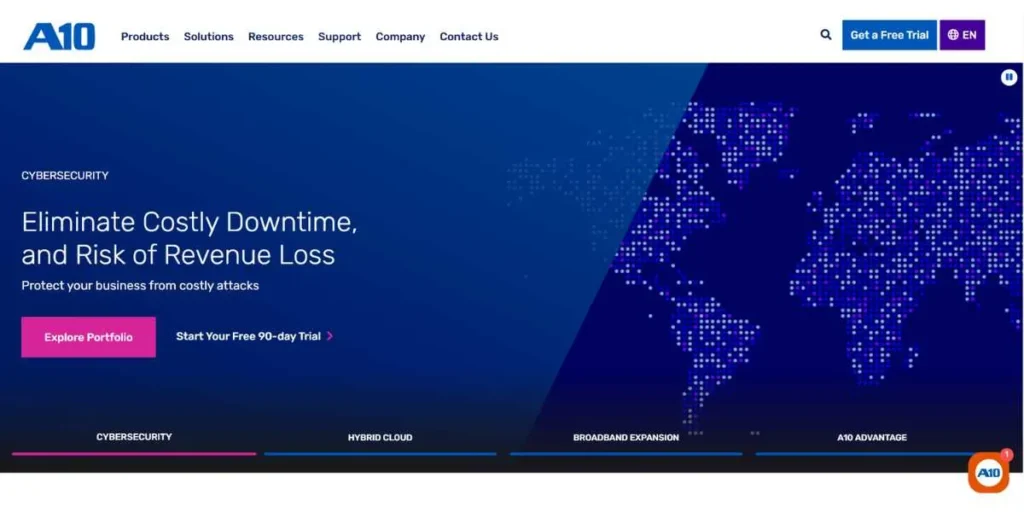
A10 Thunder TPS (Threat Protection System) is an effective DDoS defence solution that is designed to protect large-scale enterprises, ISPs and data centres that need maximum speed and intelligence to deal with attacks. It is architected to protect an extended range of DDoS attacks, volumetric attacks, protocol attacks, and application-level attacks, all with sub-second responsiveness and minimal latency. The security does this by utilising cutting-edge machine learning, behavioural analytics, and deep packet inspection to be precise in detecting malicious traffic without hurting legitimate user experiences.
Key Features:
- Defence against multi-vector DDoS attack in real-time
- Machine learning to self-education are used to intelligently detect threats
- Input/output architecture of high throughput and low latency
- Centralised analytics dashboard, Deep visibility
- Cloud, on-premise, or a hybrid environment
Pros:
- Very high performance protection
- Special mitigation measures
- Supports high-end traffic filtering and forensics
Ideal for: Telecom operators, ISPs, government infrastructure, and large-scale enterprises
Pricing: Custom pricing
Website Link: https://www.a10networks.com/
2. CloudFlare
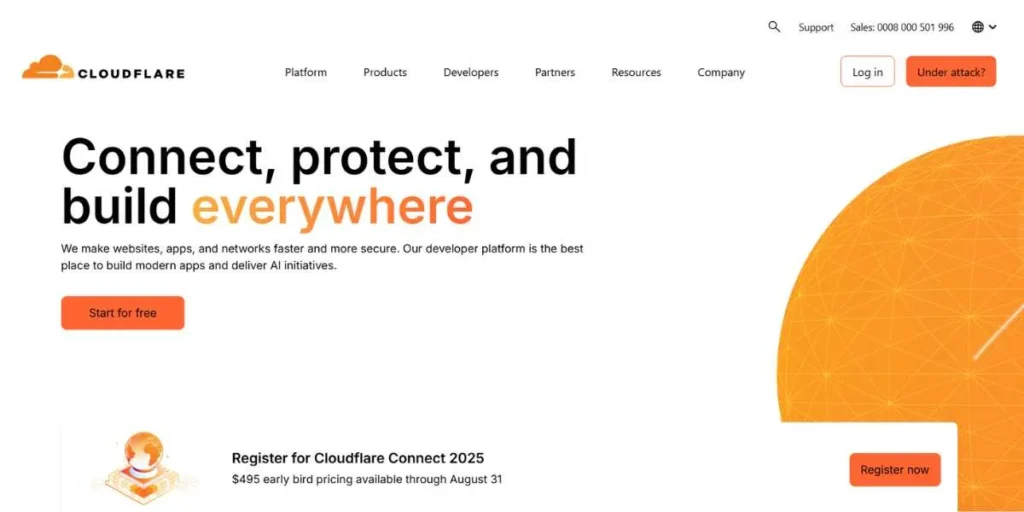
Cloudflare is an always-available global platform that offers consistency with DDoS protection through a complete package of performance and security services. Their edge network is distributed globally and covers more than 300 cities, meaning their ability to detect and neutralise attacks is very fast due to their proximity to the source. Cloudflare offers the protection of both small websites and large enterprise applications by automatically absorbing all the most complex and high-scale attacks.
Key Features:
- Continuous DDoS prevention using the world edge servers
- Built-in CDN, DNS, WAF
- Blocks L3/L4 and L7 attacks automatically
- Smart user-friendly dashboard of real-time analytics
- API and or bot protection provided
Pros:
- Fast to set up and administer
- There is no performance sacrifice during the mitigation.
- Scales blends seamlessly with traffic requirements..
Ideal for: E-commerce platforms, SaaS providers, financial institutions, and media websites
Pricing: From $20/user/month (billed annually)
Website Link: https://www.cloudflare.com/
3. Fastly
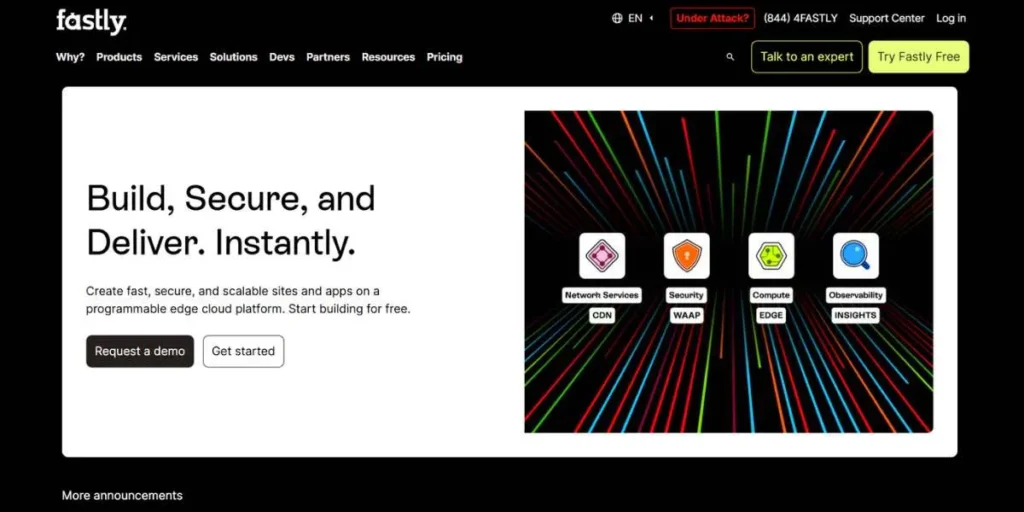
Fastly is a technology platform that provides a superior edge cloud solution built around fast content delivery with DDoS protection incorporated. It offers mitigation at the network edge in real-time, and therefore, does not involve a lot of latency or downtimes during attacks. The platform accommodates a flexibility of custom security logic, which permits the business the administer its defensive strategy. Fastly is architected with a high level of performance and change. It is characterised by a high degree of security logging that allows complete awareness of threats.. It suits perfectly both speed and security generating businesses.
Key Features:
- Real-time defence-edge DDoS defence
- VCL custom security logic
- Fast configuration update response to threats
- In-built CDN
- Security logs
Pros:
- Nano-latency coverage
- Rules that had lots of customisation options
- Good API support
Ideal for: Startups, SMEs, and large enterprises
Pricing: $50/mo + usage
Website Link: https://www.fastly.com/
4. Imperva

Imperva has been reported to provide effective DDoS protection, especially the application layer DDoS defence, based on behaviour analytics and machine learning. It assists in preventing multifaceted attacks at the same time remaining available to a site. The solution is also imbued with WAF, bot protection and data security, meaning that it is comprehensive. It provides continuous protection all over the world with the involvement of mitigation centres. Imperva is compatible with cloud-native environments and on-premise ones. It is particularly applicable to any enterprise that needs strict adherence.
Key Features:
- Behavioural and ML-based detection of DDoS
- Cloudflare WAF/Bot security
- International network of mitigation
- Threat dashboards in real-time
- On-premise deployment and cloud
Pros:
- Good application-layer protection
- Extensive repertoire of security products
- Good compliance features
Ideal for: Enterprises and mission-critical businesses
Pricing: From $30/user/month with enterprise pricing available
Website Link: https://www.imperva.com/
5. F5 Silverline
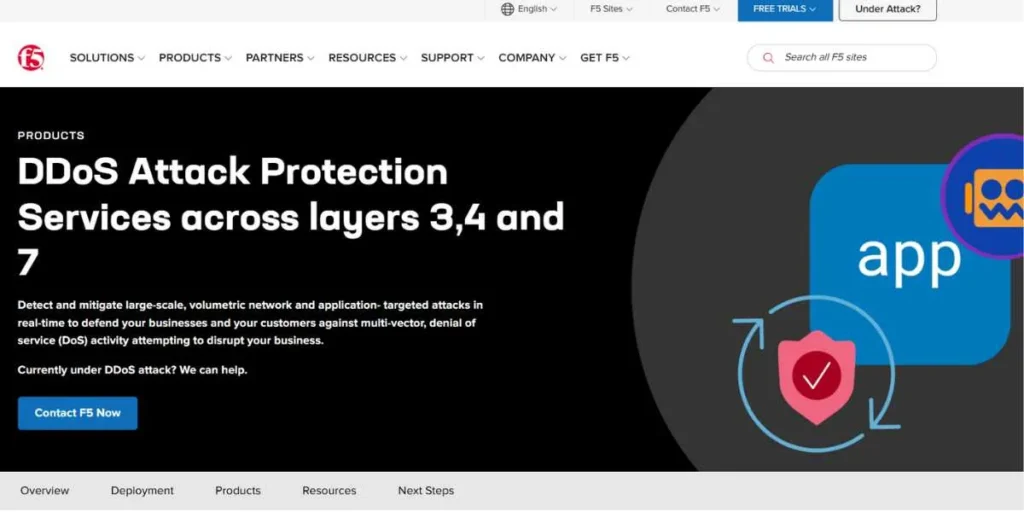
F5 Silverline takes the hybrid approach to work together to make the product DDoS protection scalable in the clouds and under the control of the cloud on premises. It offers always-on and on-demand protection options, such that organisations are able to customise the coverage that they take depending on the threat situation and the budget. Silverline implements a globally consistent protection with reach through F5-trusted security stack and cloud edge access points. It is best suited to businesses that already have F5 infrastructure, as then it will integrate seamlessly and enable expert security management that will be proactive.
Key Features:
- Hybrid (cloud + on-premise)
- Flexible, service tiers (on-demand or always-on)
- The seamless integration The seamless integration F5 infrastructure
- Professional assistance and control of threats
- Unified report and analytics
Pros:
- Flexible service offering to fit different business needs
- Fits well with non-EBRIP (existing F5 systems)
- Be able to tap into security services managed by experts
Ideal for: Organisations already using F5 infrastructure
Pricing: Pricing available upon request based on service requirements.
Website Link: https://www.f5.com/
6. Radware DefencePro
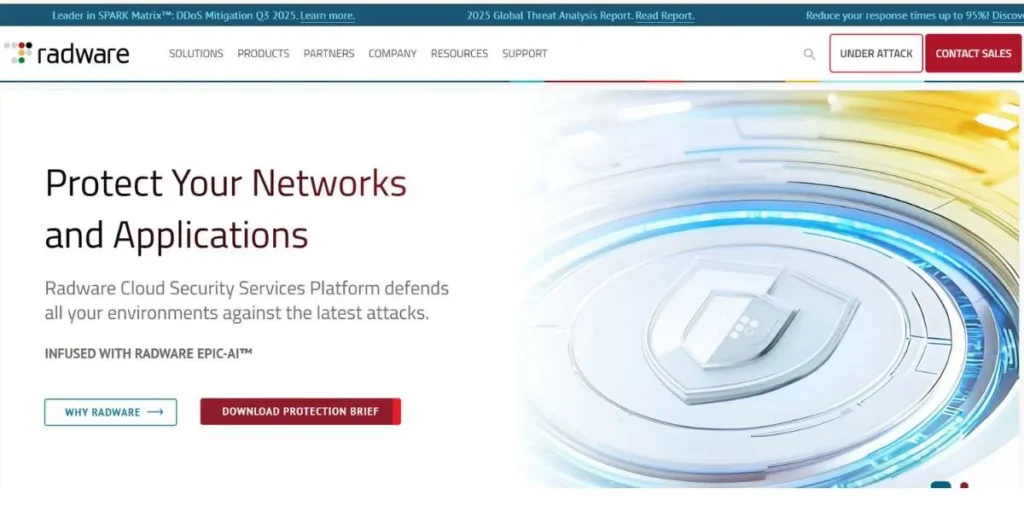
DefensePro is a high-performance intrusion prevention system that helps in preventing DDoS attacks in real time by using a combination of behavioural analysis and machine learning. It secures the network layer, application, and it learns to adapt to the changing pattern of threats. Defend ultra-low latency and a scalable architecture; it is perfect for organisations that have performance-sensitive applications. Its automated threat intelligence coordination means that it can proactively defend without much human assistance.
Key Features:
- Behavioural, real-time and signature-based detection
- Full protection: application + network
- Application of adaptive response using machine learning
- A new latency with high throughput
- Scalable and modular deployment option
Pros:
- High-speed, real-time defence against attacks Broadband DDoS protection
- It is ideal in high-traffic and critically sensitive environments.
Ideal for: High-traffic enterprises with latency-sensitive applications
Pricing: Pricing available upon request based on deployment requirements.
Website Link: https://www.radware.com/
7. Arbor Networks
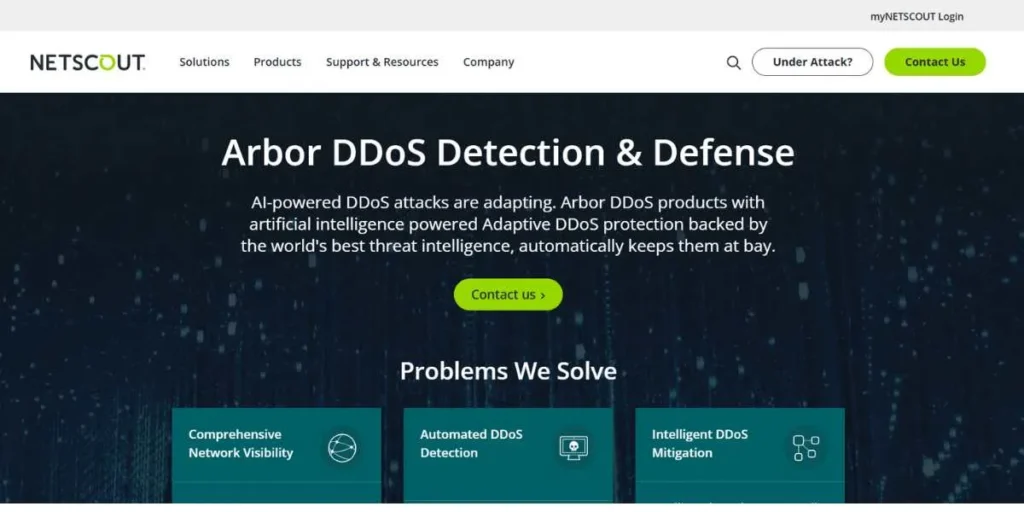
Arbour Networks provides DDoS protection at the global level since it is a world leader in DDoS mitigation with predictive detection systems and threat intelligence research. Thuseee of real-time attack monitoring and historical trend analysis empowers Arbour to provide proactive attack defence against emerging attack vectors. It has the architecture to fit both enterprise as well as service provider deployment, and this provides flexibility and scalability of security integration.
Key Features:
- Threat intelligence and research-based insight into threats around the world
- Actual-time malware detection and proactive security
- Interfacing with the global threat surveillance systems
- Both enterprise and service provider networks are scalable
- Threat analytics and advanced reporting tools. Advanced reporting and analytics tools for threat evaluation
Pros:
- High threat intelligence
- Hybrid protection
- Custom prices
Ideal for: Large enterprises, ISPs, and data centres
Pricing: Pricing available upon request based on deployment and intelligence requirements
Website Link: https://www.netscout.com/
8. Akamai Prolexic
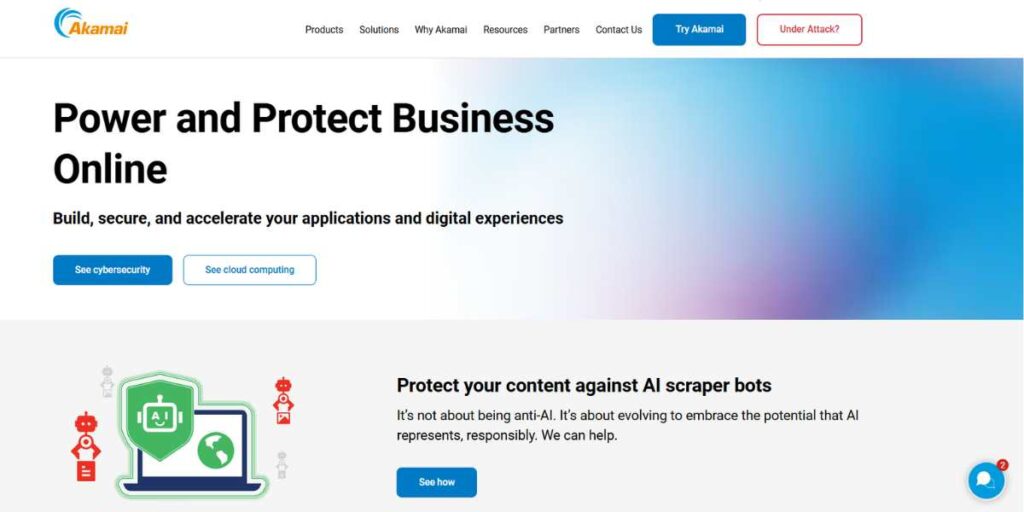
Akamai Prolexic provides enterprise-level DDoS mitigation services using one of the industry’s leading global content delivery networks to absorb tremendous amounts of bad traffic. It has been crafted to resist multi-terabit-level attacks and delivers smart routing to make sure that user traffic is not bypassed. Its fully managed services and round-the-clock support, along with robust analytics, make it an ideal fit for mission-critical infrastructures that cannot afford to be brought down.
Key Features:
- International networks that are capable of managing multi-terabit DDoS attacks
- End-to-end security against any form of DDoS attack
- Intelligent traffic routing and performance enhancing
- Threat detection and mitigation are made 24/7 by experts
- Reliable international coverage of places
Pros:
- Superior processing of high-scale attacks
- Shrinkage or presence in the world with confidence and delivery
- High-quality managed security services
Ideal for: Large enterprises, financial institutions, and government agencies
Pricing: Pricing available upon request based on traffic and protection requirements
Website Link: https://www.akamai.com/
9. Corero SmartWall
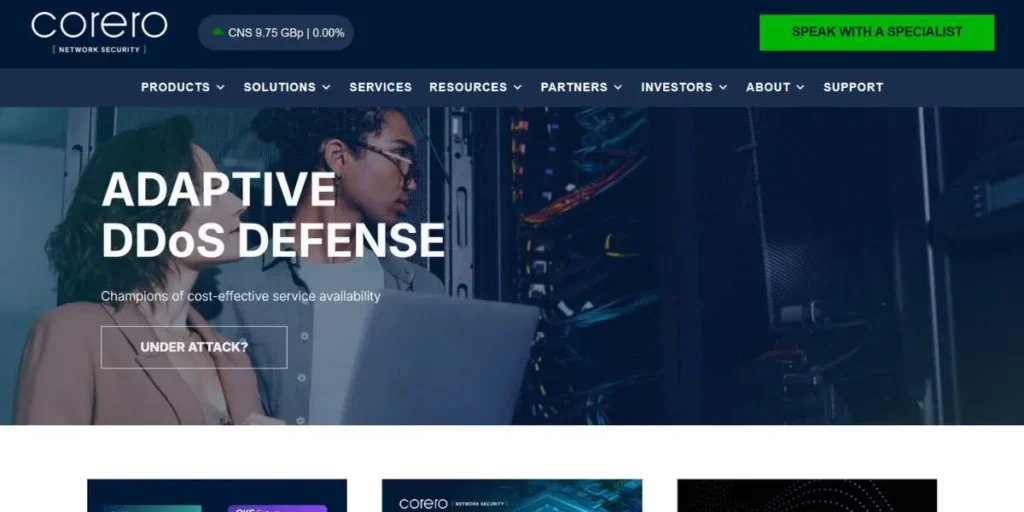
Corero SmartWall specialises in the automated real-time mitigation of DDoS attacks, requiring the least human input, which is also a good choice in case of a business that does not require a specialised security department. It is simple to deploy and smart in the filtering of traffic, which assists in giving organisations instantaneous responses to threats while maintaining good traffic. It is upgradable and has good analysis and is intelligent,, anis d a lightweight solution.
Key Features:
- Real-time automated detection and response of attacks
- Smart traffic filtering with limited human operator interference
- Low deployment cost and overhead operational cost
- Learning to deal with the changing threats
- Compliant and visibility security reporting
Pros:
- Powerful automation lowers the demand for physical management
- Easy to deploy and easy to use design
- It is an excellent deal for smaller organisations or teams
Ideal for: SMBs, startups, or mid-sized businesses
Pricing: Pricing available upon request based on deployment and capacity requirements
Website Link: https://www.corero.com/
10. Azure DDoS Protection
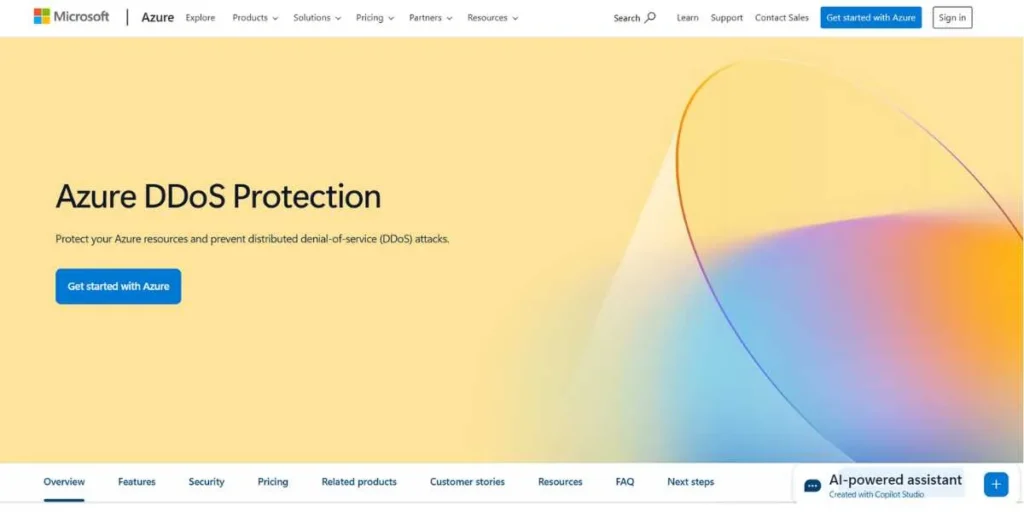
Azure DDoS Protection is a cloud-native service built especially to protect workloads running on Microsoft Azure. It also features smooth integration capabilities with Azure’s virtual networks and services, as well as auto-scaling and schedule monitoring without requiring architecture adjustments. It is constructed in such a way that it provides a scalable cloud-first organisation security, and offers analysis and reporting through the use of the Azure dashboard.
Key Features:
- Automated defence against threats and scaling up of attacks
- Integrated into the Azure security and monitoring stack
- The pricing model was pay-as-you-go, depending on usage
- Incident and advanced traffic analytics
Pros:
- Top match with people who have already used Azure
- Natural management through integrated Azure tools
- Scalable and expensive defence theory
Ideal for: Large-scale businesses.
Pricing: From $3,000/user/month (billed annually) with usage-based pricing available
Website Link: https://azure.microsoft.com
Comparison Table: DDoS Tools at a Glance
| Top 10 DDoS Protection Tools of 2025 | ||||
|---|---|---|---|---|
| Name | Development Type | Target Use Case | Pricing tier | Support level |
| A10 Thunder TPS | On-premises/Cloud | Enterprise Security | Premium | 24/7 Expert |
| CloudFlare | Cloud-based | Small to Enterprise | Budget to Premium | Standard/Premium |
| Fastly | Cloud-based | Performance-focused | Premium | Developer Support |
| Imperva | Hybrid | Application Security | Mid to Premium | 24/7 Managed |
| F5 Silverline | Hybrid | F5 Ecosystem | Mid to Premium | Managed Services |
| Radware DefencePro | On-premises | High-performance | Premium | Expert Support |
| Arbor Networks | Hybrid | Threat Intelligence | Premium | Research-backed |
| Akamai Prolexic | Cloud-based | Large-scale Enterprise | Premium Plus | 24/7 Managed |
| Corero SmartWall | On-premises | Automated Protection | Budget to Mid | Standard |
| Azure DDoS Protection | Cloud-Native | Azure Ecosystem | Mid to Premium | Microsoft Support |
How to Choose the Right DDoS Protection Tool
Selecting a DDoS protection tool is a factor of the size of your organisation, network design, type of threats and budget available. Begin by assessing the size of your infrastructure and the frequency or complexity of attacks you are likely to deal with. However, should you be a large corporation or service provider, a more powerful, worldwide integrated tool with sophisticated threat information, such as Arbour Networks or Akamai Prolexic, might possibly be the more appropriate approach. Smaller companies might be able to stick with simpler cloud-based services that can protect with autoscaling and easy integration, such as Cloudflare or AWS Shield.
It is also important to evaluate the capabilities of the tool to detect and alleviate the problem in real-time since downtime of the systems in the face of an attack can also result in loss of money and reputation. Seek options that provide preemptive protection, threat automation, and any way possible to integrate with your current security stack. Also, note the simplicity of the tool, its ability to scale, and customer support possibilities, particularly in cases where your in-house technical team lacks experience with DDoS attacks.
Lastly, never rule out the reputation of the vendor, testimonials by the customers, as well as whether the provider is capable of providing flexible pricing models so that your future exposure and growth can be matched. An effective, scalable tool, with a proven good support warranting better ROI over the long term, will and should outweigh the lowest short-term cost solution.
Conclusion
In this blog, we have mentioned the top 10 DDoS protection tools. These tools are very important as there is a DDoS attack threat to businesses nowadays. It is for providing continuous monitoring, rapid response, and long-term resilience. It is ideal for startups, global enterprises, and businesses all around the world.
FAQs
What is a DDoS attack?
A DDoS (Distributed Denial of Service) is used to send so much internet traffic to a server, a service or a network to overload it and interrupt the service or shut it altogether.
Why should businesses protect themselves against DDoS?
Protection against DDoS is essential since the defined types of attacks may result in losses, bad reputation, and trust with the customers, as well as a possible data breach without proper mitigation.
Are small businesses also subject to DDoS attacks?
Small companies, yes, are often targeted, and this is because they tend to have not as strong security measures in place and so are easier to exploit.
What are the mechanisms of DDoS protection tools?
These are instruments checking incoming traffic, detecting both patterns that indicate there is an attack and rejecting malicious requests and passing legitimate ones. Others also predict defence with artificial intelligence and threat intelligence.